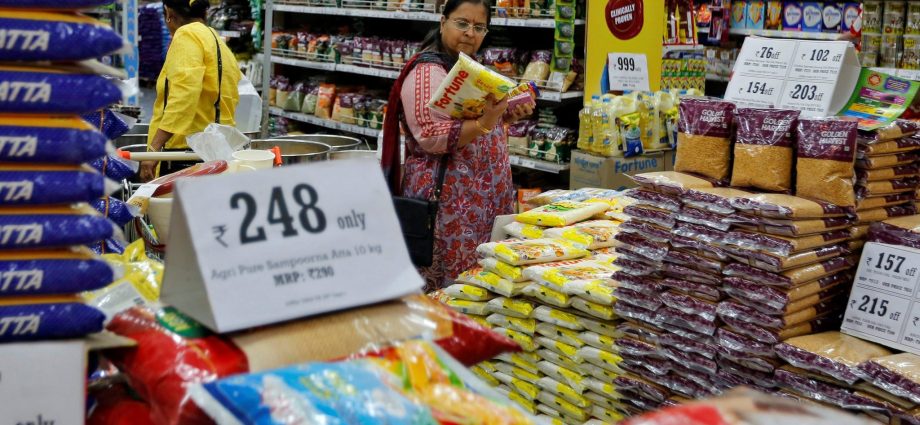The unpredictable nature of India’s agricultural sector highlights how quickly a country producing exportable surpluses can turn into one grappling with potential supply shortages in the domestic market.
These supply shortages raise the prospect of food insecurity and food price inflation. In response, the government immediately clamped down on exports, beginning with staples like wheat and rice.
In April 2023, India celebrated a record-breaking agricultural export performance, which had surpassed US$42 billion in the preceding year. This level of exports exceeded the pre-pandemic record achieved in 2018–2019 by almost 48%.
Rice exports had increased by over 15% and pulses by over 84%, while sugar exports were more than 25% above the previous year’s level. Such positive signs were seen as a major step towards the implementation of the 2018 National Agriculture Export Policy.
The bullish expectations on agricultural exports have all but disappeared in the first six months of the 2023–24 financial year. Except for basmati rice, all other major agricultural commodities, including non-basmati rice, pulses and sugar, registered negative export growth.
Interestingly, this trend had set in even before the government banned rice exports in July 2023.
In August 2023, the government further restricted rice exports by imposing a 20% export tax on parboiled rice. With overall supplies of major food grains tightening, especially after a decline in the country’s wheat production during the 2022–2023 crop season, the government went into overdrive to control cereal prices, which registered a year-on-year price increase of over 8%.
High domestic prices for other agricultural commodities also influenced the government’s decision to clamp down on exports. Onion prices increased by 31% in August 2023 and by over 55% in September. In response, the government imposed a 40% export tax in August and set a minimum export price of $800 per metric ton, effective until the end of 2023.

Similarly, sugar exports were restricted, allowing sugar mills to export only 6.2 million metric tons of sugar in the season ending on September 30, 2023. The quota, initially imposed until October 31, 2023, has since been extended indefinitely.
In contrast, despite a 17% increase in the price of pulses in the month of September, the government did not impose any export restrictions to ease domestic supply shortages. Instead, it authorized the export of over 2 million tons of essential varieties like lentils and pigeon peas to stabilize the market for these commodities.
India’s efforts to curb the export of major agricultural commodities resulted in sharp increases in international prices of the targeted commodities.
With the largest rice exporter withdrawing supplies from the international market, rice prices in global markets increased by nearly 25% between June and September 2023, while sugar prices shot up to their highest level ever.
India’s primary export markets, especially those in its neighborhood, are concerned about the runaway prices that could result from export restrictions.
Several advanced countries have been critical of the series of sudden decisions that India has taken to curb exports. In a September 2023 meeting of the World Trade Organization Committee on Agriculture, a group of nine countries led by the United States pointed out that India’s export ban had adversely affected countries heavily reliant on imports.
The affected countries, in their view, would be at risk of food shortages in such economically uncertain times.
The United States claimed that India’s export ban on non-basmati rice was an “unnecessary trade barrier” and demanded its immediate withdrawal. The United States based its criticism on information provided by the US Department of Agriculture, which estimated that India was likely to have a record rice production of 134 million tons in 2023–2024.
But the US Department of Agriculture’s Rice Outlook later reported that rice production in India was projected to fall by 4 million tons in 2023–2024.
The Indian government’s response to supply shortages in key agricultural commodities was clearly aimed at countering increases in the prices of these commodities. With the next general election scheduled for May 2024, the government cannot afford food price inflation.

Several large states are also scheduled to go to the polls to elect new governments, heightening the political stakes. Political considerations also discourage the government from relying on imports to augment domestic supplies, as questions would arise about why a self-sufficient India is dependent on imports.
While the Indian government has its justifications for imposing export restrictions, it is vitally important to explore measures that could help prevent global food shortages. India needs to ensure that volatility in its agricultural production is addressed effectively.
Indian agriculture suffers from several disadvantages, not least crippling underinvestment. There is a need to revive the abandoned idea of creating regional food banks that could respond to the needs of net food-importing countries during production shortages.
Biswajit Dhar is Distinguished Professor at the Council for Social Development
This article was originally published by East Asia Forum and is republished under a Creative Commons license.

